
“This work is an honor as a human being, not just as an activist,” Sequarier McCoy said. (Adam Mahoney/ Capital B)
This story is part of ICE vs. LA, a collaborative reporting project by LA Public Press, Caló News, Capital & Main, Capital B, LA Taco, and Q Voice.
Four months after nearly 5,000 federal troops descended onto Los Angeles, Marsha Mitchell, a Black organizer in South Central, explained what made it impossible for her not to act: her neighbors.
At the peak of the federal immigration raids this summer — when U.S. Immigration and Customs Enforcement was arresting an average of 540 people per week in the city — her neighbor, Erica, and her husband and friend were taken by federal agents while eating breakfast in their home.
All three were placed in a van and driven toward downtown Los Angeles.
But Erica knew she had to get back to her small children, recalled Mitchell, a lifelong South Central resident, from a conversation she had with her neighbor.
“As a mother, her whole thing was, I got to get to my babies,” Mitchell said.
When the agents opened the van doors in downtown LA, Erica broke free — still tied up, still terrified — and ran. While Erica managed to escape, her husband was placed in the detention center, where he said conditions were unbearable. According to Mitchell, he self-deported rather than endure them, choosing to escape the system that had trapped him.
Erica was the family’s breadwinner through her tamale stand, but with her husband gone, she is too afraid to leave her home. The family has collapsed financially under the weight of a single raid, Mitchell said.
“Not only has she lost her business, but also her husband and the ability to give her family what they need to survive,” said Mitchell, an organizer with Community Coalition, the long-standing anti-violence and drug addiction group founded by now-Mayor Karen Bass in 1990.
In South LA, where Los Angeles City Council Districts 8, 9, and 10 have transformed from predominantly Black to predominantly Latino, and where the highest percentages of undocumented residents in the city now live, Erica’s story is part of the new normal.
For some South Central residents, the raids have triggered economic and social catastrophes. During the first weeks of concentrated immigration enforcement, 465,000 fewer workers reported for work. One local business owner told the economic justice group Strategic Actions for a Just Economy that he’d lost 80% of his business in the first month of the ICE crackdown. Other shops across South Central and downtown lost business for weeks.
The raids are posing a new hurdle for Black and Latino families to pay rent in one of America’s most expensive cities. But they’ve also catalyzed Black neighbors to act.
“[Erica] is a member of our community, and she is afraid to come outside,” Mitchell said. “She is not alone, and that is why we’re helping with mutual aid.”
Immediately, that looked like bringing her family groceries and referring them to resources for free mental health care.
Community Coalition, known as CoCo, is training dozens of block captains to canvass their communities and coordinate food drop-offs, safety check-ins, and care referrals in real time. They’re organizing their neighbors around the threats facing everyone, regardless of their race or residency status.
The immediacy of this care network — 18 block captains now, with hopes to reach 28 — emerged after Erica’s abduction by ICE, according to Mitchell, who works for CoCo.
LA County’s Black residents — 20% of whom are immigrants or children of immigrants — are standing in solidarity with their Latino neighbors, saying they are part of a shared fight against over-policing and racialized violence. Nine out of 10 ICE arrests have been of Latinos.
“Seeing families torn apart is so reminiscent of the white supremacist playbook that we’ve seen historically in communities of color, and that starts with our Indigenous siblings to slavery and through these latest ICE raids,” Mitchell said.
Neighbors moved to action
On a quiet stretch of 92nd Street, Pamela Riley propped open her front gate around 8 a.m. For one Saturday in October, her front yard — one of the typical South Central flair caged in by a sagging iron gate — became the heartbeat of a block fighting back against abandonment.
Within minutes, her neighbors began to gather. Grandmothers sipped coffee, young mothers munched on donuts, and teenagers organized flyers printed in Spanish and English.
Just steps from the 110 freeway and the ghostly remains of shuttered shops and clinics, her community is forging new lines of solidarity amid chronic neglect and a deep need for connection. This is the new frontline in South Los Angeles, where a coalition of Black and Latino residents is launching a network of “Neighborhood Action Hubs” along the Vermont and Broadway corridors to keep mutual aid alive as official support shrinks.
The goal: to weave a grassroots shield against ICE crackdowns and social services cuts and offer a model for how neighbors, not institutions, can bridge fear and isolation.
“That blueprint of success is there. The road is paved, we just need to walk it together,” said Riley, a 64-year-old lifelong South Central resident.


Riley’s block has become a lot more quiet and less frequented since ICE raids began. (Adam Mahoney/Capital B)
Later that morning, as the sun tried to fight through the gloomy sky, a group of three of the women who showed up at Riley’s event — two Black, one Latina — passed the same mural-painted utility boxes and chain-link fences that mark so many South LA blocks. Old-school Chevys, some missing hubcaps, were parked next to pickups and battered minivans, while the sound of cumbia drifted from a doorway where a woman watered her agave under the music’s sway.
As they moved from house to house, the group stopped at gates and asked neighbors about the specific issues facing their blocks and individual households. At one, a longtime Latino immigrant, gray-haired and smiling, shared how she planned to vote in the now-passed November election.
Deeper onto the block, the canvassers encountered two undocumented migrants — one a young father, the other a middle-aged woman. The father spoke to tangible issues in the neighborhood: “People have started stealing car tires at night and cutting wires from light poles for quick money,” he said.
The mother spoke quietly about work drying up and more neighbors “laying low” as rumors of ICE sightings swept through the area. The Latina canvasser asked directly about food access and whether anyone still sold homemade snacks. The woman hesitated, then explained in Spanish that she stopped selling crepes out of fear.
The canvassers turned to the others and suggested a solution: organizing a block-wide food vendor party, so people could sell their products safely.
Walking farther, they found themselves cautiously welcomed by a Black city worker who had lived on the block for decades. She described losing sleep as the city’s racial demographics shifted and her worry about Black and Latino votes being split or erased.
At each stop, the canvassers handed out cards with voting information and explained how to register, where to find drop boxes, and how to access rapid response teams if ICE was spotted or the lights went out again.
“Solidarity is literally in LA’s DNA,” Mitchell said. “We know that when communities come together, we weather all kinds of storms — governmental, financial, whatever comes our way.”

Neighborhood canvassers speak to a women. This specific Saturday, these two canvassers knocked on dozens of doors for over 2 hours. (Adam Mahoney/Capital B)
LA’s long-history of racial coalitions
Riley said her memories are filled with better days: bustling shops, a hospital on 94th, neighbors who’d send their kids to college together. She has watched her neighborhood swing from prosperity to depression and now, uncertainty.
Today, Riley’s yard and days are devoted to strategizing — she and other block captains count names, rehearse response plans and dream of new “welcome to South Central LA” signs at every corner. During meetings, they talk about how, in other parts of the city, neighbors stand by each other in crisis; here, too, unity could mean survival. The terror of recent abductions — a beloved tamalera torn from her routine and dayworkers swiped off the streets — still haunts these blocks, sharpening every knock at the door.
“I grew up in a civil rights era of the ’60s, and I’m starting to realize this is the new era of civil rights,” Riley said, explaining that the attack on civil rights today has extended far beyond immigration raids. “It is requiring more from all of us.”
Having lived through what she considers broken promises following the devastation of the 1992 LA Riots, Riley said she understands that revival cannot rely on state intervention alone, and it bridges racial divides. Instead, she insists, “what’s going on in Washington DC is showing us we need to join together and support each other.”
It also reminds her of the power of community. During the 1992 protests against police brutality, Latinos constituted the largest portion of arrests despite making up a smaller percentage of the overall population at the time.

Dozens of volunteers began their Saturday at 9 a.m. to door knock. (Adam Mahoney/Capital B)

When canvassers could not get in contact with residents, they left behind these door hangers with a list of resources. (Adam Mahoney/Capital B)
The roots of Black and Latino collaboration go back to the founding of LA itself, where 26 of the city’s 44 original settlers in 1781 were Black/Afro-Latino with Spanish surnames — establishing a tradition of mixed neighborhoods and joint political action. This foundation was later strengthened during the Great Migration and again throughout the 20th century, when Black and Latino residents forged working alliances in the face of shared exclusion from citywide power.
In recent decades, the demographic mix in South Central has shifted further. Where once the community was predominantly Black, Latino residents now form the majority. The change created new opportunities for solidarity, as well as challenges, especially after Latino LA City Council members were caught on tape using racist anti-Black language while discussing concerns about the political power of Black residents. The tapes reopened wounds over neighborhood displacement.
Today, the skepticism remains real for a lot of Black people in LA. In June, a viral moment spread across the internet after Latino protesters hurled racial insults at a Black LA police officer.
“A significant number of Black folks don’t see this as their fight,” author and commentator Earl Ofari Hutchinson said after the protest in June. “They’ve seen anti-Blackness in Latino communities. They’ve felt left out when it came to our issues. That breeds skepticism.”
But “if anything, the debate over whether Blacks should link hands with Latino activists in the immigration battle seems age old,” Hutchinson wrote on his daily blog.
Hector Sanchez, CoCo’s Deputy Political Director, agreed.“It takes a lot of work. I’m not going to say it’s very easy … but it’s people that are willing to have those difficult conversations at times to ensure that we have each other’s back.”
Just a day after the city council tapes leaked, more than 400 people came together in Boyle Heights “to talk about the importance of multi-racial solidarity,” he said. Despite the tensions, neighbors continue fighting side by side for justice and belonging.
In the years since, organizers have responded by promoting cross-cultural events, joint canvassing efforts, and language exchange programs. Language exchange workshops and “know your rights” sessions — alongside mutual aid deliveries — have become linchpins of the hub approach.
“We are not just helping Black folks, not just one population. It’s for all of us,” explained Sequarier McCoy, a 49-year-old lifelong LA resident.
“I grew up in a Black and Brown community,” she added. “I smelled Black-eyed peas, but I also smelled tortillas. I like corn on the cob and Esquites.”
McCoy is also acutely aware that the issues of migration, detention and deportation are far from just Latino issues. “It’s also for Dominican folks. It’s also for Belizean folks. It’s also for Caribbean folks,” she said. She said her partner, a Belizean migrant, is living in fear too.
Black undocumented migrants are deported at a rate four times more often than their numbers would suggest, according to an analysis of federal data by the Black Alliance for Just Immigration.
It is why this practical solidarity spans crises, organizers said. When SNAP benefits run dry, when an ICE van is spotted, or when a neighbor’s lights go out, the same phone trees and rapid response plans kick in.
“This work is an honor as a human being, not just as an activist,” McCoy said.

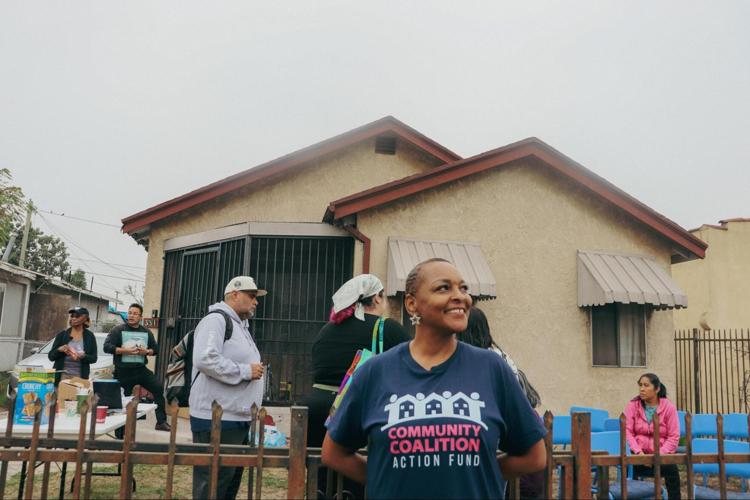
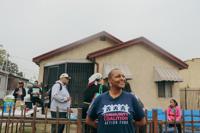
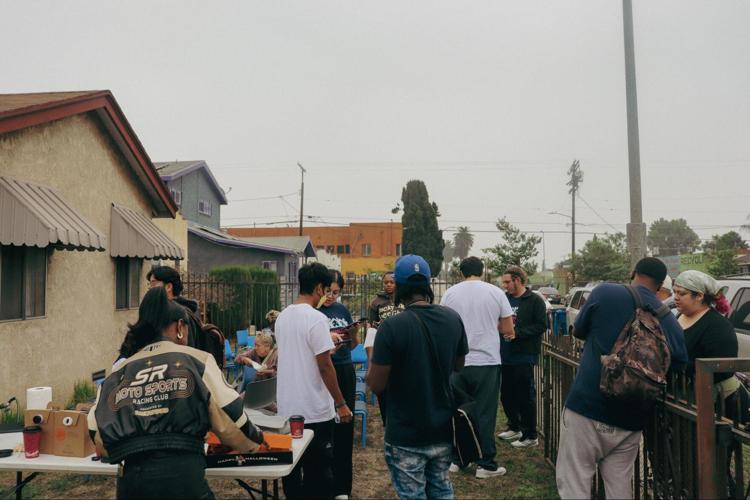
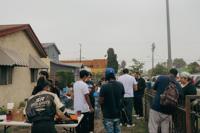
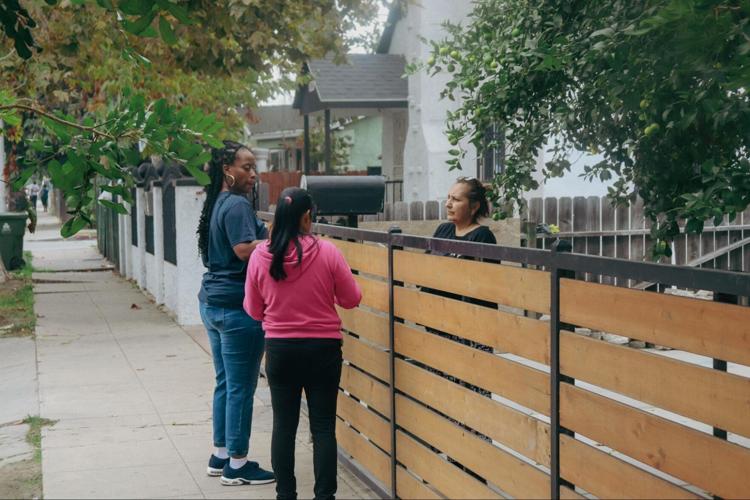
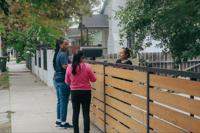
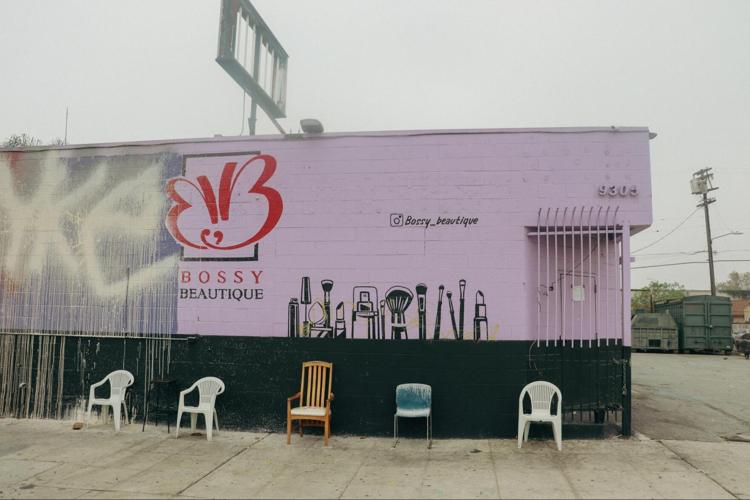
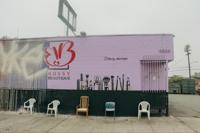

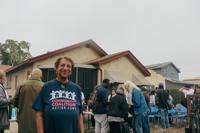
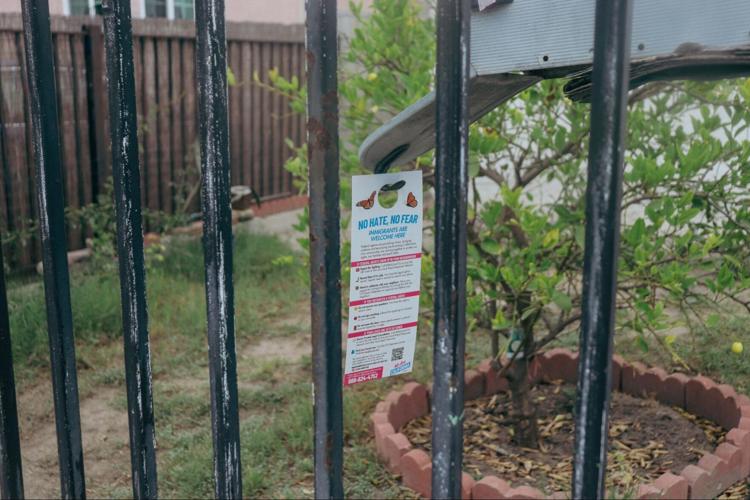
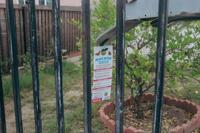








(0) comments
Welcome to the discussion.
Log In
Keep it Clean. Please avoid obscene, vulgar, lewd, racist or sexually-oriented language.
PLEASE TURN OFF YOUR CAPS LOCK.
Don't Threaten. Threats of harming another person will not be tolerated.
Be Truthful. Don't knowingly lie about anyone or anything.
Be Nice. No racism, sexism or any sort of -ism that is degrading to another person.
Be Proactive. Use the 'Report' link on each comment to let us know of abusive posts.
Share with Us. We'd love to hear eyewitness accounts, the history behind an article.